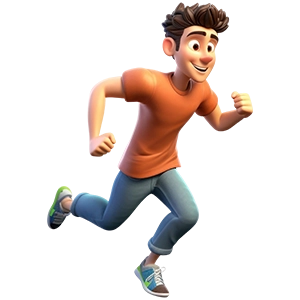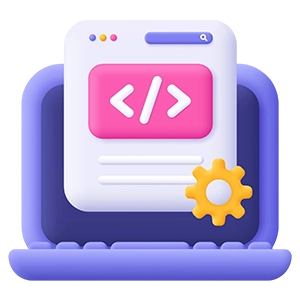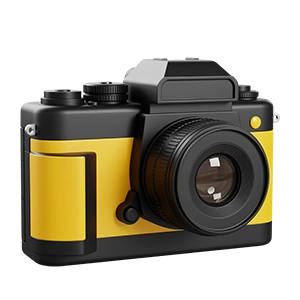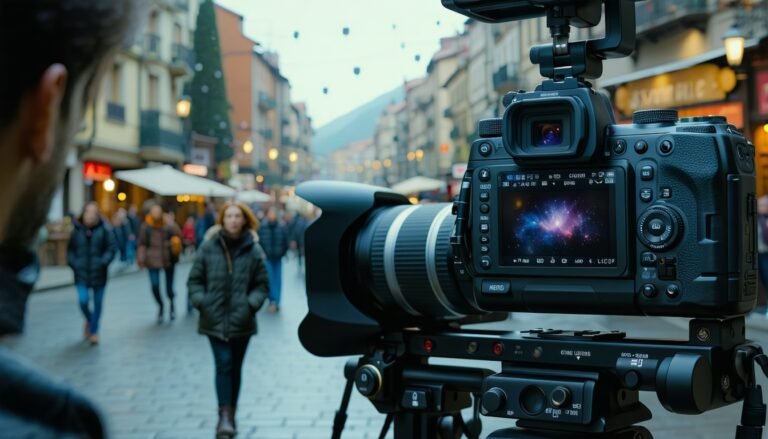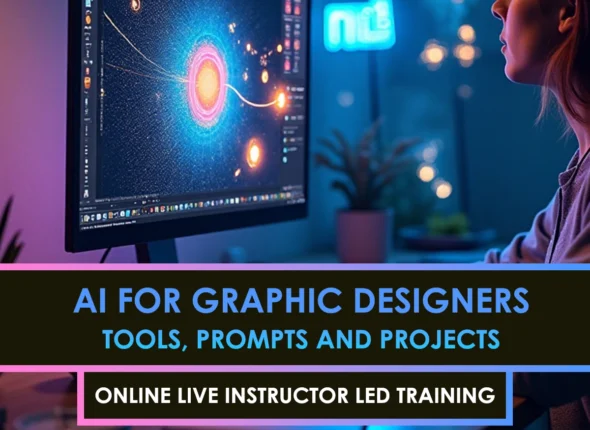Explore CGI/live-action post-production.
CGI/live action post-production can feel like uncharted territory at first. You might be blending live actors with digital creatures, futuristic cities, or subtle visual tweaks that no one should notice. The key to a flawless result is planning each step carefully. Let’s see how you can combine computer-generated imagery with real-world footage and make it all look natural.
Determine your creative goals.
Before you even hit the “record” button, figure out the purpose of your scene. Are you aiming for a photorealistic fantasy world shot through a window, or a cartoon-like creature running around a live set? Clearly defining your goals helps you decide on the approach, such as whether you need sweeping 3D backgrounds or seamless CGI/live action transitions. A clear vision also guides your lighting, set design, and final compositing choices.
Line up your shots for accuracy.
Precise coordination between your real and digital elements is essential. This begins with capturing your live footage in a way that complements your CGI additions. Consider perspective, lens choice, and camera movement. The more accurate your filming process is, the less guesswork you’ll face later in post-production.
Use camera tracking effectively.
Camera tracking is your new best friend. Specialist software analyzes the movement of your real camera, allowing you to replicate the same motion in your 3D space. This synchronization ensures digital assets move convincingly within your live footage. If you’re curious about the filming process itself, you might also explore CGI and live-action filmmaking to see how professionals set up shots that smoothly merge with their CGI.
Match lighting for realism
If your digital dragon or futuristic robot doesn’t match the lighting on set, everyone notices. Lighting is one of the main factors that can make or break your blend. Natural daylight scenes need bright reflections, while evening shots demand softer lighting to maintain the right mood.
Plan your lighting reference.e
Gather real-world shots or references of the lighting conditions you’re trying to imitate. When you set up your 3D render, match the color temperatures, brightness, and shadows to your reference. Sometimes, you might film a chrome ball on set to capture real reflections, ensuring your CGI elements replicate the same light sources. It’s a small step that leads to a significant leap in quality, especially if you’re aiming for advanced CGI and live-action visual effects.
Seamlessly composite your final scene
Compositing is the magical stage where everything fuses into a single, polished frame. Your layering, masking, and blending decide whether your audience buys the illusion. Puy, compositing integrates key clarity, so every detail from atmospheric haze to subtle reflections feels like a natural extension of your live footage.
Fine-tune color grading
Color grading ensures your digital and live elements maintain visual consistency. If your CGI asset appears too saturated or washed out, adjust its levels to match the background. Use color-matching tools and tweak midtones, highlights, and shadows. At this stage, focusing on the most minor details can push the result from “okay” to “wow.” For more information on stitching everything together, refer to CGI/live-action compositing.
Wrap up and move forward.
Smooth CGI/live action post-production doesn’t happen overnight. You’ll likely face snags with lighting, motion tracking, or compositing, but that’s all part of the learning curve. Keep honing your technique by breaking down your scenes frame by frame and refining each piece. Eventually, this process becomes second nature.
If you’re aiming for bigger projects or more ambitious scenes, consider studying advanced workflows and experimenting with different software tools. The more you practice, the easier it becomes to spot what’s missing or overdone. Remember, every shot is an opportunity to level up your skills and impress your audience.
FAQS – Frequently Asked Questions
What Is CGI/Live Action Post‑Production?
CGI/Live Action post‑production refers to the stage where computer-generated imagery is blended with live action footage to create the final visual output.
Why Is CGI/Live Action Post‑Production Important?
CGI/Live Action post‑production adds realism and polish by integrating digital elements seamlessly into filmed footage.
What Happens During CGI/Live Action Post‑Production?
During CGI/Live Action post‑production, tasks like compositing, color grading, tracking, and rendering are performed to finalize shots.
Which Software Is Common In CGI/Live Action Post‑Production?
Popular tools include Nuke, After Effects, Fusion, Maya, and Houdini for CGI/Live Action post‑production workflows.
Can CGI And Live Action Consolide During Post‑Production?
Yes, CGI/Live Action post‑production is specifically about consolidating digital CG with live footage to create seamless visuals.
What Is Match Moving In CGI/Live Action Post‑Production?
Match moving in CGI/Live Action post‑production tracks the camera motion so CGI elements align precisely with live footage.
How Does Color Grading Fit Into CGI/Live Action Post‑Production?
Color grading in CGI/Live Action post‑production ensures digital and live elements share consistent lighting and tone.
What Role Does Compositing Play In CGI/Live Action Post‑Production?
Compositing layers CGI onto live footage, ensuring depth, shadow, and lighting match during CGI/Live Action post‑production.
Is Tracking Used In CGI/Live Action Post‑Production?
Yes, tracking is essential in CGI/Live Action post‑production for stabilizing footage and aligning CGI accurately.
Can CGI/Live Action Post‑Production Fix Filming Errors?
CGI/Live Action post‑production can correct framing, remove unwanted elements, and improve lighting digitally after filming.
How Long Does CGI/Live Action Post‑Production Take?
Time for CGI/Live Action post‑production depends on complexity; it can range from days to months per sequence.
What Is A Clean Plate In CGI/Live Action Post‑Production?
A clean plate is an empty version of a shot used in CGI/Live Action post‑production to help remove foreground objects or track motion.
Are Rotoscoping And CGI/Live Action Post‑Production Related?
Yes, rotoscoping in CGI/Live Action post‑production isolates subjects frame by frame to allow seamless digital integration.
Can CGI/Live Action Post‑Production Be Done Remotely?
Yes, CGI/Live Action post‑production work often happens remotely with artists collaborating globally on cloud pipelines.
What Is Pre‑Visualization In CGI/Live Action Post‑Production?
Pre‑visualization in CGI/Live Action post‑production helps plan shots by combining rough CG with live-action proxies before full production.
How Important Is Detail In CGI/Live Action Post‑Production?
Attention to detail—like scale, lighting, and motion—is critical in CGI/Live Action post‑production to maintain believability.
Are There Careers In CGI/Live Action Post‑Production?
Yes, career roles include compositors, VFX artists, 3D modelers, rotoscope artists, and post‑production supervisors.
What Are Common Mistakes In CGI/Live Action Post‑Production?
Mistakes include mismatched lighting, scale inconsistencies, poor tracking, and overlooking lens distortion during CGI/Live Action post‑production.
How Budget Affects CGI/Live Action Post‑Production?
Budget impacts team size, software tools, and render time—all important to high-quality CGI/Live Action post‑production.
Is Real‑Time VFX Part Of CGI/Live Action Post‑Production?
Yes, real‑time engines like Unreal are now integrated into CGI/Live Action post‑production pipelines for faster results.
How Can Beginners Learn CGI/Live Action Post‑Production?
Beginners can learn CGI/Live Action post‑production through online tutorials, film schools, and hands‑on VFX courses.
What Is The Future Of CGI/Live Action Post‑Production?
The future of CGI/Live Action post‑production includes AI-driven workflows, virtual production, and real-time compositing tools.


